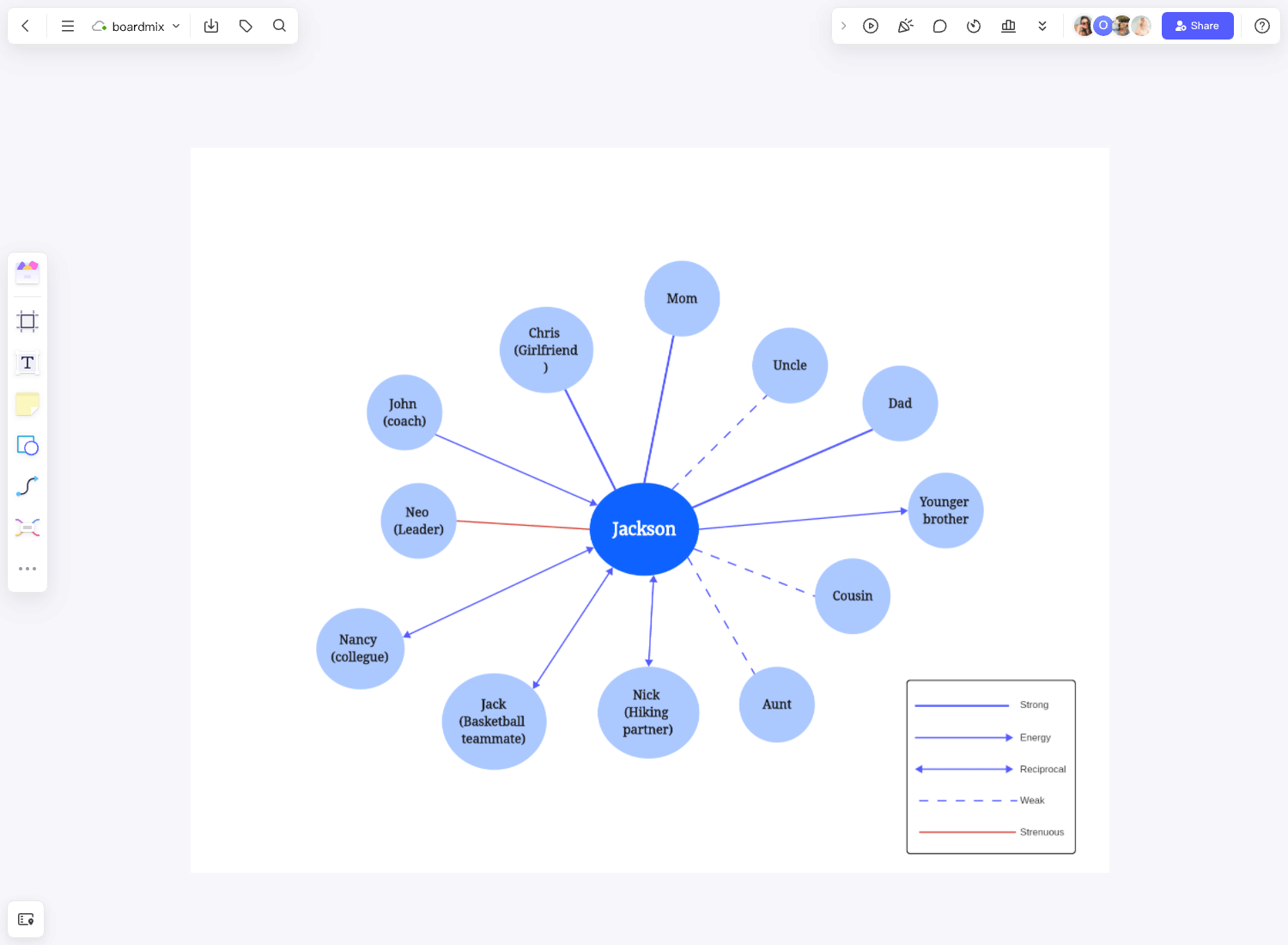You're welcoming new people into your team; trying to know them more can be challenging. With an ecomap template, people can provide helpful information about themselves and their relationships with the external world. In other situations, the template is also beneficial to medical personnel or counselors to help them understand individuals better.
What is an ecomap?
An ecomap is a visual tool that provides valuable information about a person and their connections. The structure was first developed by researcher Ann Hartman in 1975 to illustrate individuals' or groups' ecological systems. While creating the ecomap template, you'll have to use various symbols to represent connections of people more simply. In short, it gives the audience a better overview of the individual's surroundings.
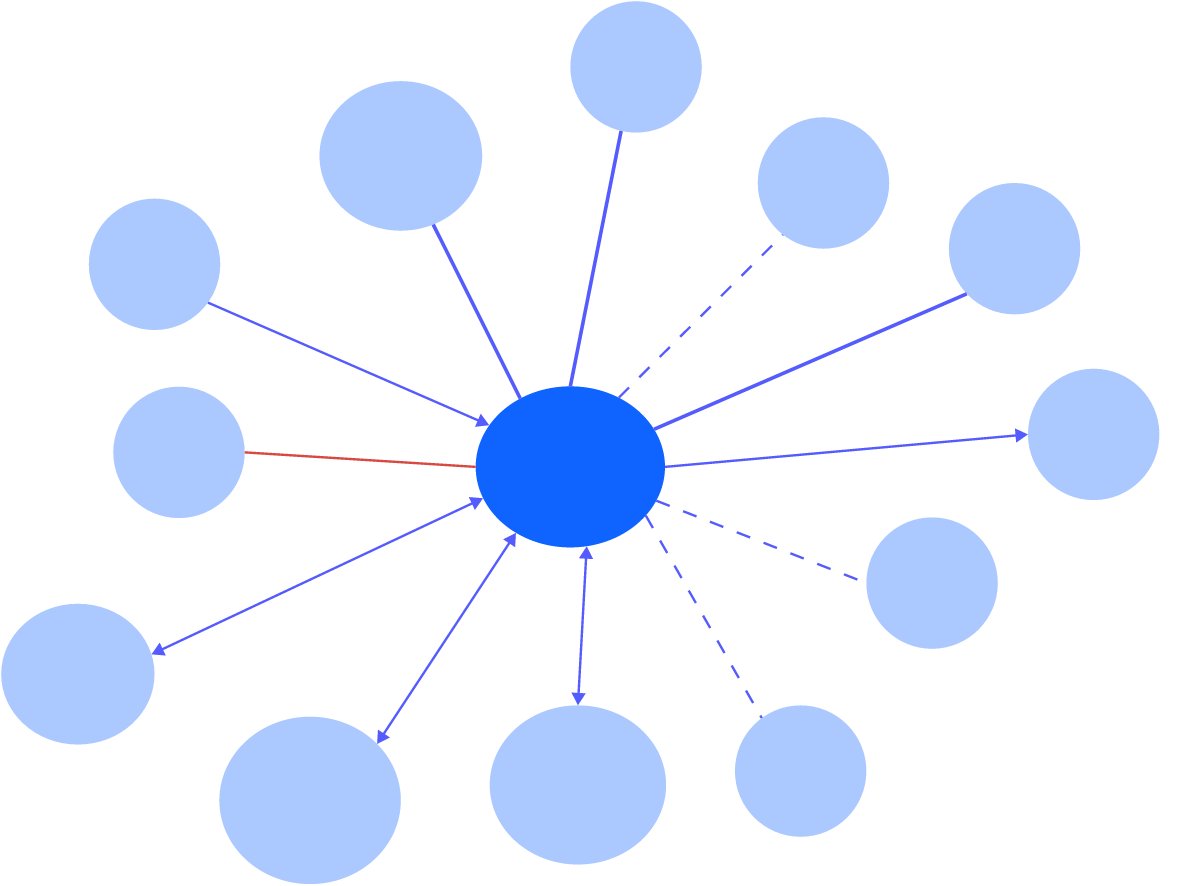
One must know that an ecomap has vast uses. With this, it also comes in different types, including the following:
- Child ecomap
- Social relationships ecomap
- Individual ecomap
- Family health assessment ecomap
- Family service plan ecomap
- Seniors ecomap
- Parent-child ecomap
What should be included in an ecomap?
An ecomap highlights the person in question. They can be any member of the society. As previously mentioned, different ecomaps come with different elements. Let's say you're about to illustrate a family ecomap template, so you must include the following components.
- Friends
- Schooling
- Religious connections like places of worship
- Sports team
- Social clubs
- Hobbies
- Place of work
- Social services
- Extended family members
- Community engagement
- Medical health services
Also, you must remember that an ecomap template has various symbols, including the following:
- Thick lines. If you don't want them thicker, you can have them darker. They represent stronger relationships between two endpoints of the line.
- Curvy lines. They usually come in red. In any ecomap, the curve line means a negative or stressful relationship. In some instances, they're usually broken, indicating the source.
- Single lines. These lines have arrows to emphasize the energy flow and directions toward something.
Benefits of using an ecomap template
There are evident advantages when you use an ecomap template. The following are some of them.
- Understand individuals better. With an ecomap template, you can dive deeper into knowing individuals better. As you consider various factors in the map, you'll also understand who they are, including their social connections, family dynamics, and community.
- The template is customizable. Since ecomaps have different kinds, you can customize your template depending on its purpose. You can personalize it how you want so the illustration can be easily understood.
- It's easy to share. Most online platforms, like Boardmix, have an ecomap template in their library. These templates are predesigned, so you must only fill in the sections and reorganize the connections. It has a link to the template to share with your peers. Using the link, they can view or edit your template.
Ecomap Templates in Boardmix
Family Ecomap Example-01
The first ecomap example places the family as a single entity at its center. Therefore, the graph shows all the things that interact with the family as a unit. In more detail, the connections we see are the extended family members, the family friends, the church, the social services, the medical services, the utility services, and the community services. This graph shows you the general areas that the family needs to work on.
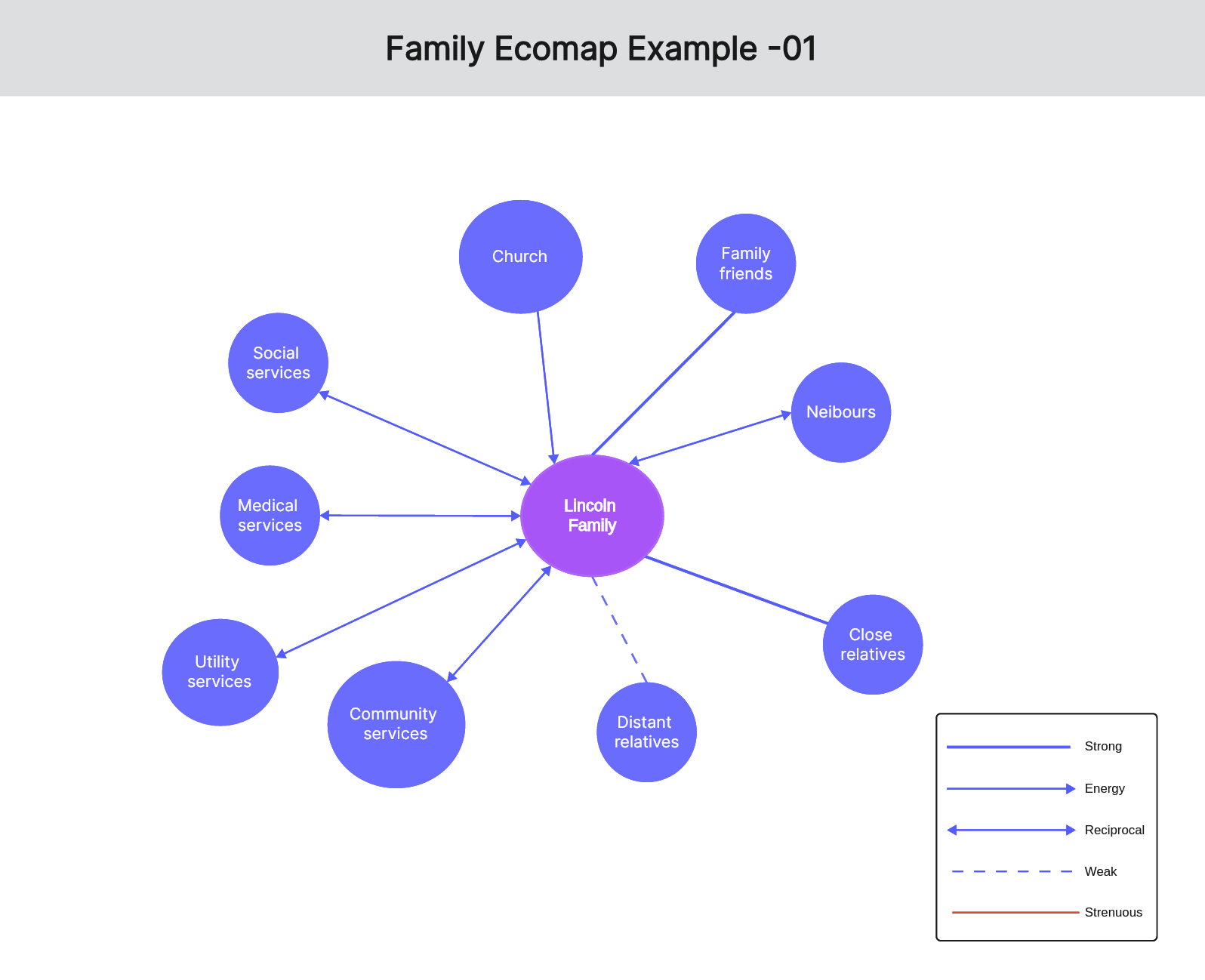
Family Ecomap Example-02
Another family ecogram example separates the parents and the kids, even though they are still placed all together in the center. In this case, there are all the interactions of the previous example, plus some additional ones. The new elements are the kids’ school and hobbies, as well as the parents’ workplaces, and each member’s friends. In this case, you can see in more detail, the relationships of every member of the family.
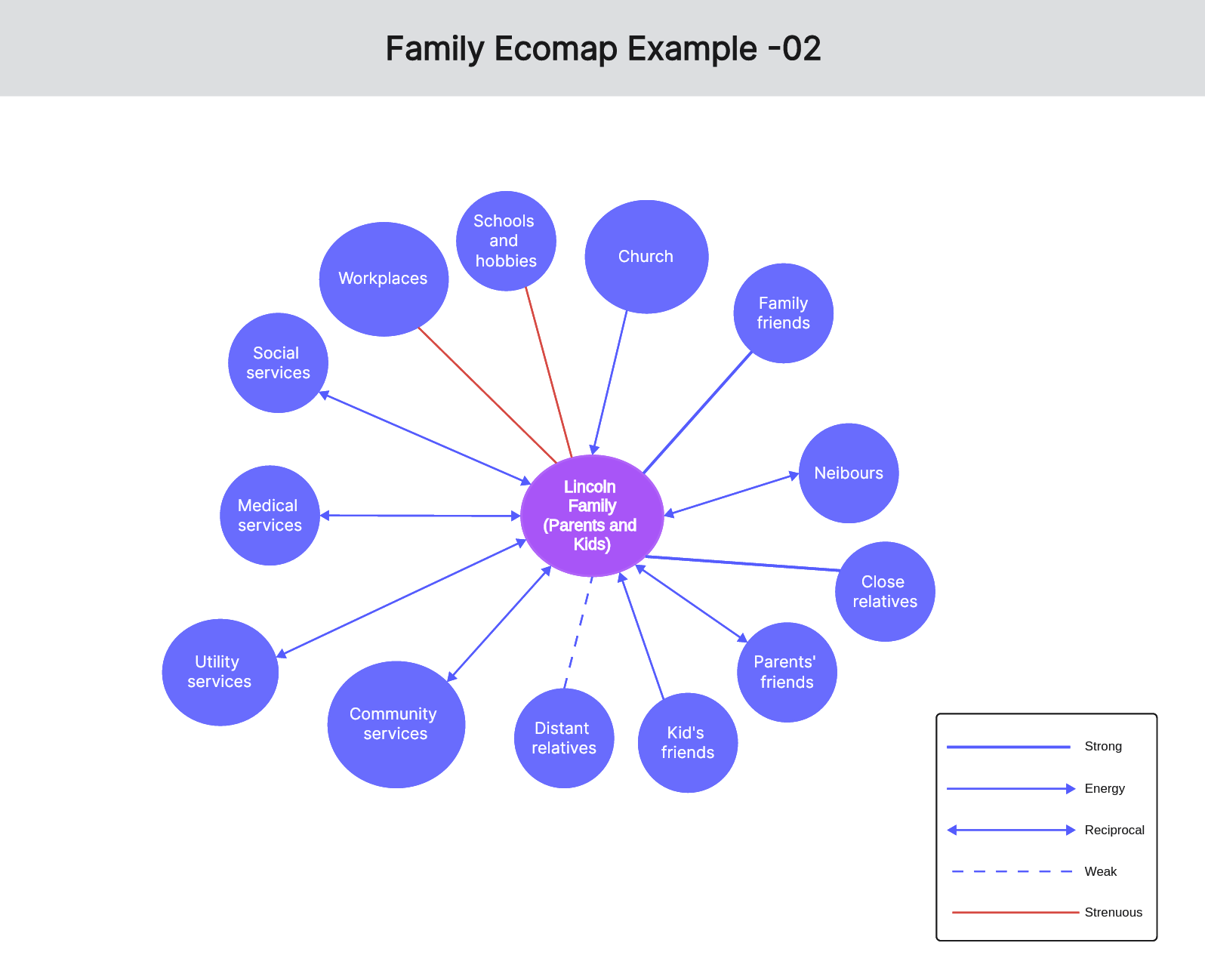
Ecomap Example in Social Work -01
In the first ecomap example in social work, we are analyzing the relationships in the environment of a young person attending college. In this particular case, we have noted the young person at the center of the graph and the rest of the systems around them. These include the mom, dad, older sister, younger brother, classmates, close friends, teachers, love interest, and extended family. The stressful and competitive relationship between their siblings is indicated with a broken line, while the school is also shown with a curvy line.
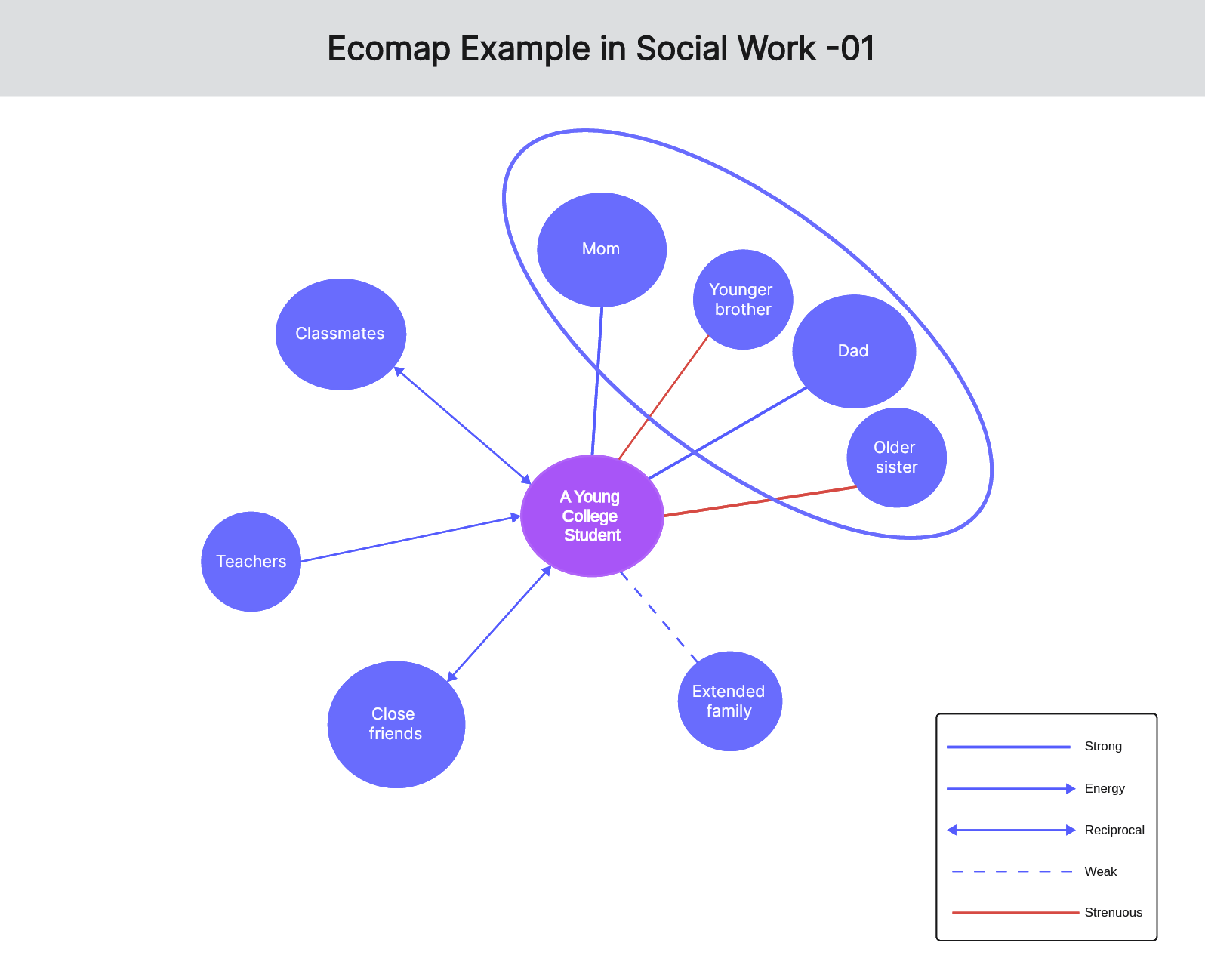
Ecomap Example in Social Work -02
Apart from the family ecomap, there is also the social work ecomap. In this social work ecogram example, we are examining the relationships of a young person attending college. In this case, we need to separate all the important members. Therefore, we separate the mom, dad, older sister, younger brother, classmates, close friends, teachers, and extended family. In this example, this allows us to spot the stressful and competitive relationship between their siblings.
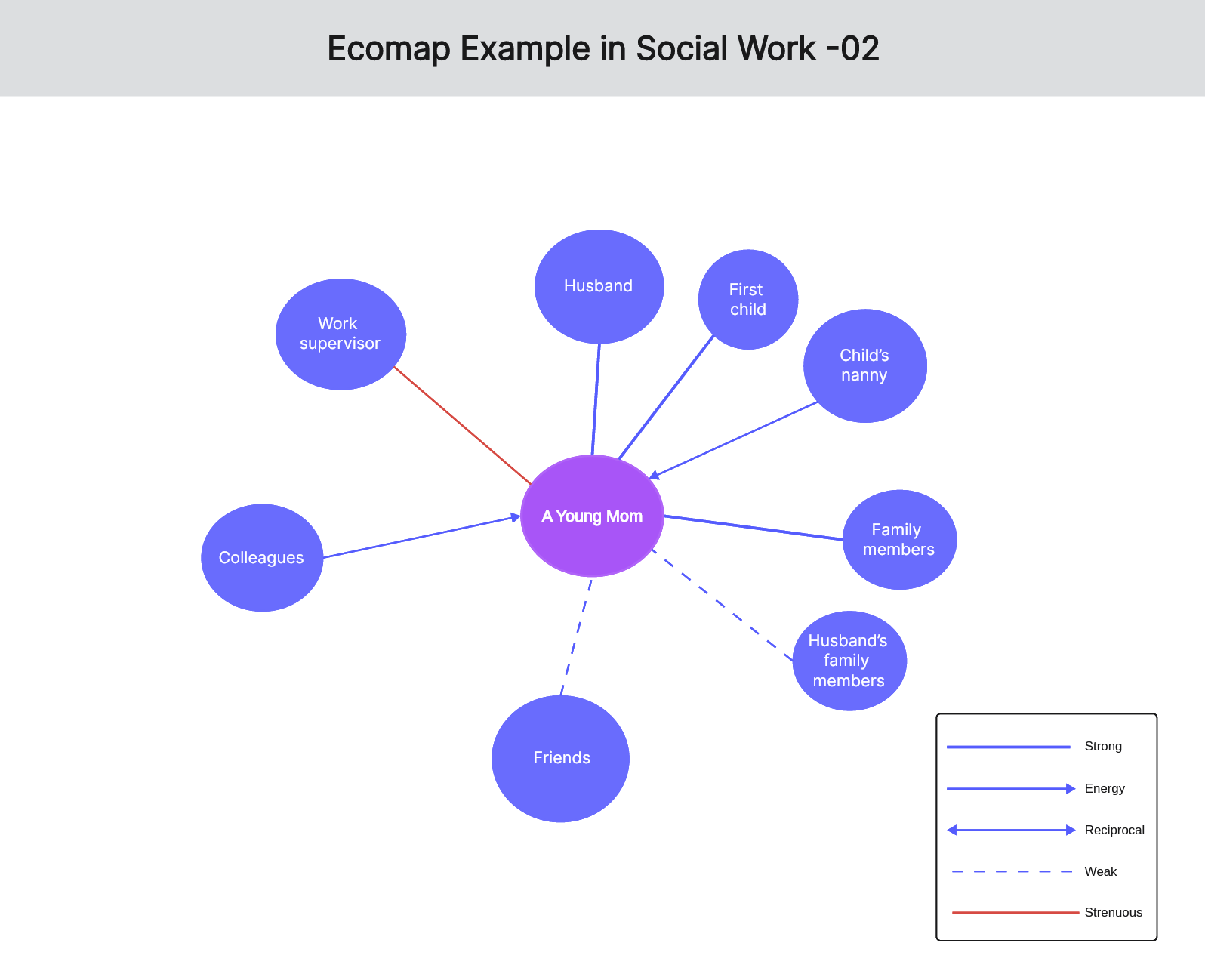
How to use the ecomap template in Boardmix
Everyone can quickly create an ecomap using the ready-made ecomap template in Boardmix. Refer to the guide below.
Step 1 – Create your Boardmix account for free to access your workspace.

Step 2 – From there, click the Templates button to load the template library. Locate and click the ecomap social work template.
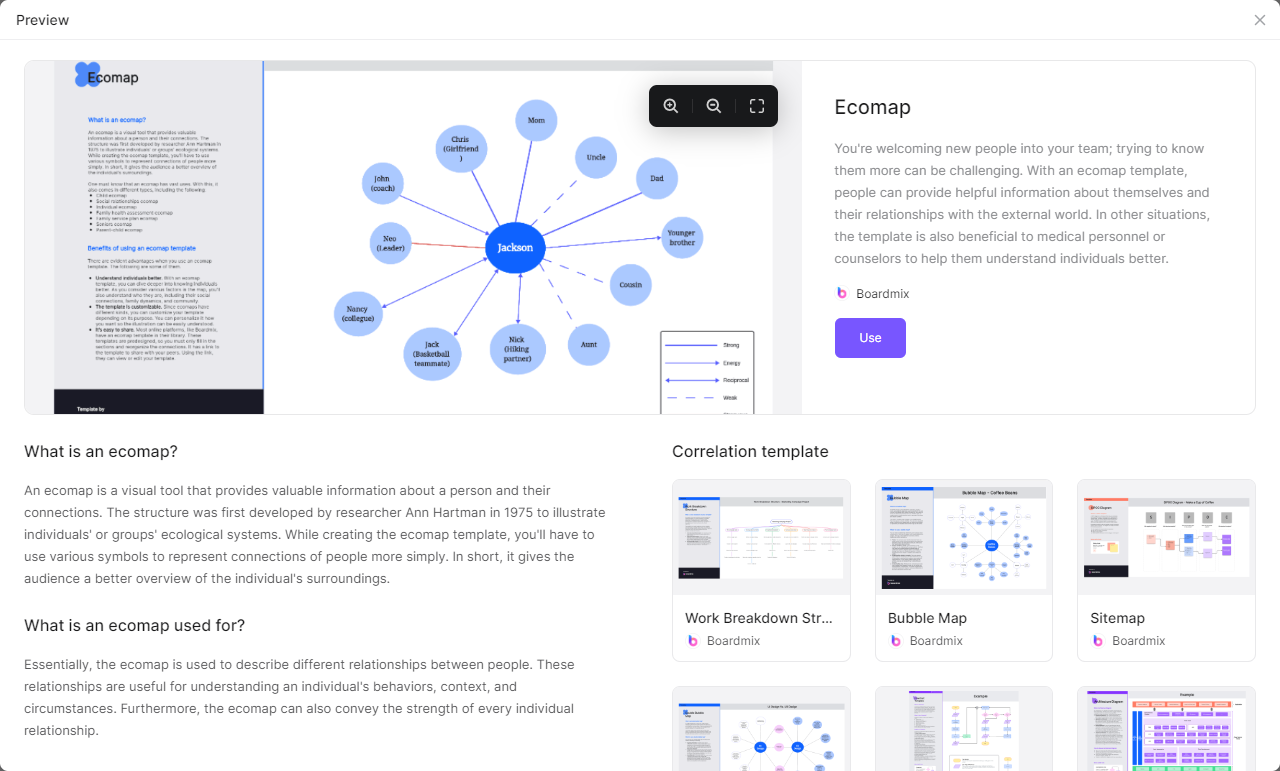
Step 3 – Simply type all the relevant data into the template.
As you create your template, it might also be beneficial to consider some of these best practices.
- You can have sample questions to find or clarify connections. In a family ecomap template, questions like 'who is dear in your life, who among the people do you spend most of your time with, or what is your job' will be beneficial to establish the connections.
- Create a legend and ensure to maximize relationship lines. In some illustrations, you might use dotted lines to show weak relationships, while in other sections, it may be represented with a single line.
- Colors can be a game-changer. You can have one color for formal relationships and another darker tone for informal relationships. In this way, your ecomap will look organized and easy to read.
Step 4 – Once you’re done, share your graph directly from your workspace.

FAQs about ecomap
What is an ecomap used for?
Essentially, the ecomap is used to describe different relationships between people. These relationships are useful for understanding an individual's behaviors, context, and circumstances. Furthermore, the ecomap can also convey the strength of every individual relationship.
What is the difference between a genogram and an ecomap?
A genogram refers to the graphic illustration of the structure and composition of a family. It's closely related to a family tree. Meanwhile, the ecomap generally focuses on family and personal social relationships. Consider the structure, as genograms are relatively more complex than ecomaps. While an ecomap focuses on the social environment, the genogram sticks to the history of a family and extended members.


